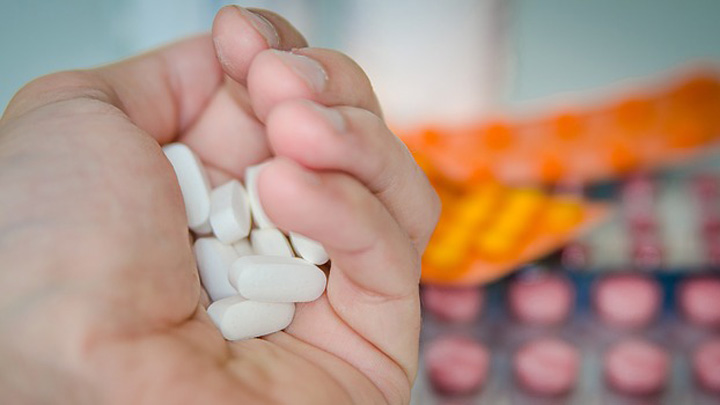You don’t need to suffer in pain! How to ease aches naturally

Thousands are frustrated because they’re taking pain medications that just don’t work. Many are told nothing can be done for their pain or arthritis – It’s just part of ageing and you have to learn to live with it right? WRONG! Physiotherapist, acupuncturist, nutritionist and author of How to Live a Life Without Pain, Verona Chadwick says, “There’s no need to suffer in pain as you age”.
More than 50% of people over the age of 65 years have radiological evidence of osteoarthritis (OA), with approximately 10% of men and 18% of women suffering symptomatic OA impacting on quality of life.
Estimates from the Australian Bureau of Statistics 2007–08 National Health Survey suggested that about 1.8 million Australians (9.2% of the population) have back problems. It has been estimated that 70–90% of people suffer from lower back pain in some form at some point in their lives and 29% of the population are affected by chronic pain. And the seemingly ‘obvious’ answer to this pain epidemic is for pharmaceutical companies to make more pain drugs, and for doctors to keep prescribing them.
The sad fact is the effectiveness of medications used to treat pain is questionable. The number of patients needed to be treated for just one person to get a mere 50% reduction in their pain is around 5 at best – so that means 4 people receive no benefit from most pain medication.
Another reality is pain medications can have serious side effects:
– Non-steroidal anti-inflammatory drugs such as Celebrex and Mobic have been linked to liver and kidney damage as well as gastrointestinal disturbance and nausea. They have also been shown to increase the rate at which cartilage degenerates, essentially making arthritis worse
– Prolonged use of opioids may result in addiction, heightened pain sensitivity, sexual dysfunction, and a suppressed immune system.
So what should patients do if they are one of the statistics where the pain medications don’t work?
“No one wants to feel ‘blamed’ for their pain, but the bitter pill – if you’ll pardon the pun – is that if people did actually take some responsibility for their own bodies and what they put into it, rather than reaching for the medicine cabinet every time they get an ache, they would find a significant reduction in their pain is more than possible, it’s highly likely,” explains Verona.
Verona is constantly highlighting to her patients how poor diet and lifestyle choices drive chronic illness and pain. And it seems the Australian Bureau of Statistics has discovered the same findings:
– 80% of severe pain sufferers over the age of 45 were overweight or obese, lived a sedentary lifestyle, and had other concurrent health risks
– 42% of pain sufferers reported fair or poor health and this trend is rising
“Chronic inflammation underpinning persistent pain is low-grade and affects the whole body, often silently ticking away, unknowingly causing damage for years,” she says. “The discerning practitioner will help you discover the underlying drivers of inflammation and chronic pain instead of masking symptoms with pain medications while the fire still simmers within”.
Verona says that perhaps we need to look at our busy lifestyle, insufficient nutrition or lack of mobility in the early stages of recovery post injury. “Or it might be a case of physical and emotional stress, toxic overload, poor gut health, food intolerance, limited exercise, or a lack of sleep, to name a few”.
“Our spine holds us up, houses and protects our spinal cord and nerves. It needs to flex and stretch with us as we move. As we age and wear the stresses of day to day living and work stiffen ligaments, muscles and our discs,“ Verona explains. “And lifestyle choices can dictate how the body weathers the storm”.
We asked her what commonly causes pain and what may help relieve it.
Pain alert
– Lack of mobility and exercise post injury
– Poor posture especially when sitting at the desk or computer
– Sitting on the couch with the laptop
– Shift work or poor sleep; we need quality sleep to heal
– Bad diets lack nutrients e.g. living on takeaways, pasta and chips
– A high Glycemic foods that contain refined sugars and promote insulin which is inflammatory
– Too much animal fat
– Alcohol, coffee and smoking
– Poor waste disposal, constipation or irritable bowel. An inflamed bowel = inflamed body.
Pain relief
– Slow deep breaths with the breath out longer than the breath in shut down the stress response and promote relaxation
– Get advice on how to safely mobilise stiff muscles and joints several times a day
– Avoid sitting more than 30 minutes at a time
– Use a lumbar support when sitting
– Get regular exercise to stimulate natural pain-relieving endorphins and improve sleep
– Eat a balanced low carbohydrate diet, three low sugar fruits a day and five vegetables at least twice a day
– Have at least 0.8g/kg of bodyweight of protein each day
– Take a daily dose of 1/1⁄2 teaspoons or 6-8 capsules of a quality fish oil
– Drink at least two litres of water a day, not tea, coffee or soft drinks
– Try natural pain-relieving substances including quercetin, rutin, curcumin, olive leaf
– Take a probiotic for good gut health
To learn more about how to safely exercise to ease pain and simple diet and lifestyle changes to get back in control of your pain, visit Verona at www.getalifeintegratedhealth.com
Do you have chronic pain? What medications do you take for it or how do you manage the pain? Tell us below.









 Proudly Australian owned and operated
Proudly Australian owned and operated